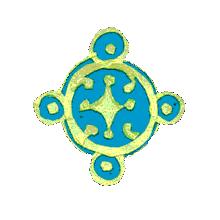Our emotions are deeply rooted in our surroundings. Our social and personal connections to one another are connected to the shape and character of our environment and our individual relationships with the environment. When we create the physical substance of our environment, as a personal matter, we then become rooted in that world that we create, and in doing so we then become joined together with the fellows, friends, family and colleagues with whom we do it.
Thus, the environment cannot be regarded merely as an object. It is the manifestation of our love for the earth, of our desires, of our affection for one another, and of our understanding of the universe. Of course an abstract, developer-built neighborhood cannot do this for us. And indeed, we are now surrounded by buildings which cannot do it - and so, small wonder - the bond to the universe and to our fellows has been weakened.
To allow this inner essence of the world, to be reborn, we must both create the world, and do it together with our fellows.
When partners in a community engage in making a generative code, planning, and building together, they embrace a living process that brings with it the deepest kind of community building. They create both a social structure and a physical structure that holds the community together because, along with the contributions of all the people in various roles, the deeply held values and culture of the neighborhood are built into the physical form. The outcome – the physical form – serves to reinforce on a daily basis an appreciation for what can be built out of shared vision and commitment, an appreciation for one another, and the restoration of mental and emotional health in the inhabitants as well as the physical surroundings.

